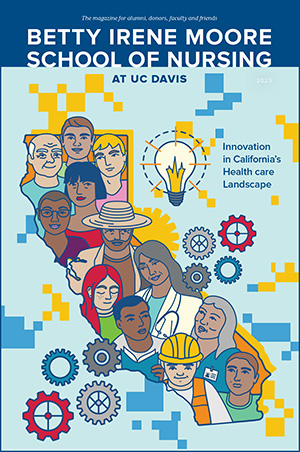When words matter
Nurse scientist examines how terminology impacts data

As health sciences advance, they grow increasingly specialized. Individuals may interact with practitioners in numerous disciplines, each of whom use unique ways to describe patient care. Even providers within the same field may use differing terms to document conditions in electronic records. That’s a problem that Betty Irene Moore School of Nursing Associate Professor Tae Youn Kim seeks to rectify.
Such discrepancies in health care terms can affect care not only for individuals but also for entire populations with the same health conditions. Nurses, physicians and other health care providers commonly use divergent words to describe patient problems, interventions and outcomes. Kim encountered miscommunication associated with semantic differences as soon as she began her nursing career 28 years ago.
“Patient care is interdisciplinary, with health teams composed of physicians, nurses and other allied professionals. But more than 130 sets of health care terminologies exist. For optimal care, all the team members must communicate the patient’s condition, treatment and outcomes in a consistent manner,” Kim says. “The algorithms I have developed cross-map differing nursing terminologies using a data standard called SNOMED CT (Systematized Nomenclature of Medicine Clinical Terms), recognizable across the numerous medical disciplines.”
Kim conducts research on various aspects of health care informatics, which involves use of computing technology to capture and store patient data in a meaningful way and analyze anonymous patient information to contribute to health knowledge. She developed clinical decision support rules and computing algorithms that determine nursing interventions and patient outcomes from varying “natural language” terms used in clinical notes. The algorithms fuse dissimilar terms into a single clinical concept using a relevant data standard.
“For example, some nurses entering notes may describe a bedsore as a pressure sore, but others may call it skin breakdown or a pressure ulcer,” Kim observes. “The algorithms I developed map different descriptions like that to standard terminology, which reduces information loss.”
Health care informatics holds the power to process and statistically show which treatments are most beneficial with the fewest side effects for patients with certain risk factors, and thereby help providers and patients make decisions about care. That potential is compromised; however, if differing terms are used to describe the same condition. Kim’s research will help improve the ability of information systems to connect the digital dots linking a person’s health status with treatments and optimal outcomes.





